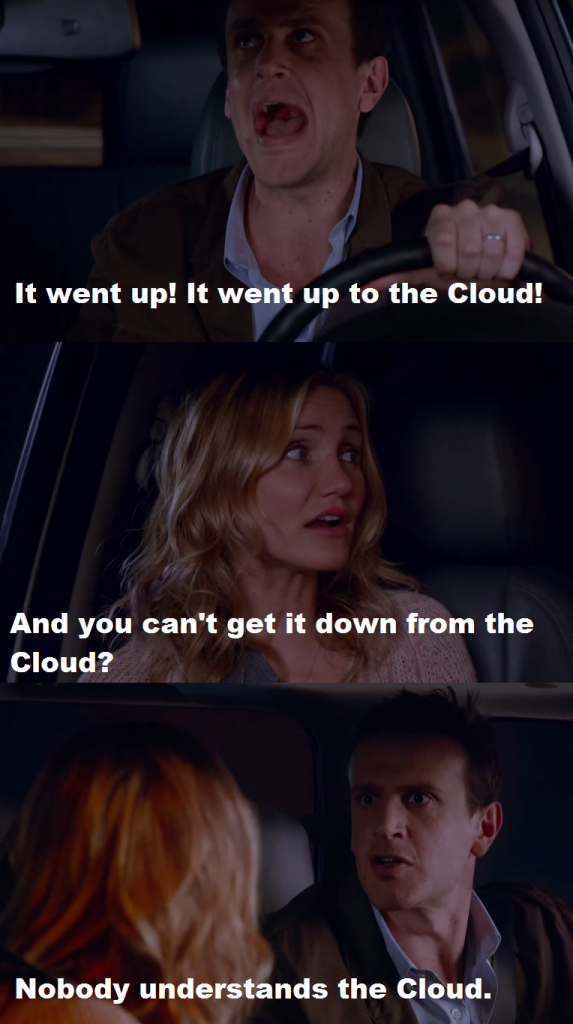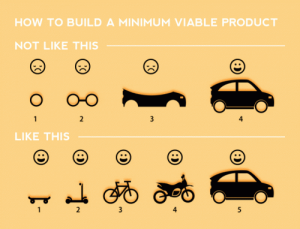Everything is Product
I can’t believe it’s been more than ten years since I first became a product manager. Since then, I’ve been on a “hybrid career” journey, and have worked in a lot of different related areas over the past several years including product marketing, competitive intelligence, developer relations, customer education, and technical content development, all while playing both individual contributor and leadership roles.
For me, though, it’s been sort of a “once a product manager, always a product manager” situation through all of it. Actually, I have brought the things I learned from product management into just about everything I’ve done, even outside of my career. Thinking about things from a user perspective, creating a closed feedback loop, working iteratively, failing fast, and staying agile (and sometimes Agile), are all strategies that can be applied successfully in quite a few different areas. Why is that?
Everything is product. (That’s why.) Except many companies, including some that I have worked for unfortunately, only consider products to be those tangible items or software applications that directly generate revenue. If you have ever been stuck in that situation, you understand my frustration. Thankfully I’ve seen the other side of the story as well. The best companies and leadership teams have a broader perspective, recognizing that everything with users should be considered a product, regardless of its primary function or revenue-generating potential.
Redefining Product
A product, at its core, is something that provides value to its users. By this definition, many aspects of a business that might not traditionally be viewed as products actually fit the bill.
Internal tools and processes
Your employees are customers too! Just because a particular application is only used within the context of doing business doesn’t mean it shouldn’t consider the needs of those users. A company’s culture should reflect its attitude toward customers. If it doesn’t care about its own internal users, why should customers trust it to care about them?
Customer support systems
Anything your customers interact with is a product, even those adjacent tools that might not be part of the primary product you are selling. This includes ticketing applications, automated phone trees, email notifications, and any other experiences that support the customer along the way. These are part of the overall customer experience, so you may not be thinking of it as a product, but the users certainly are.
Company websites and documentation
A website is a product! This is especially true if it’s a user portal or a documentation or reference site. Your core products are an extension of your brand. If the customer’s interaction with your branded content is subpar, they will view all of your products that way.
Driving Value with a User-Centric Approach
In case it isn’t clear already, the reason for viewing everything as a product is that it allows the adoption of a more user-centric approach. This shift in mindset can lead to significant improvements across all areas of a business:
- Enhanced user experience: By treating internal tools and supporting systems as products, we focus on making them more intuitive and efficient for users.
- Better customer satisfaction: When every touchpoint is treated as a product, the overall customer journey improves.
- Continuous improvement: Perhaps most importantly, the product mindset encourages regular updates and iterations based on user feedback.
I can hear those revenue-obsessed executives now. “Why does this matter?” I understand the thinking. There’s no company without revenue. But if a company is only focused on this metric, they are missing the hidden value of non-revenue products that are created in less obvious ways:
- Customer retention: Well-designed products improve satisfaction and reduce churn. (Internally, this also means employee retention and reduced turnover.)
- Brand perception: User-friendly websites and documentation enhance brand image and indirectly drive sales.
- Operational efficiency: Internal tools treated as products can significantly reduce costs and improve productivity.
Adopting the "Everything is Product" Mindset
Changing your mindset to think about everything as product doesn’t mean you have to be completely capital-A Agile and go full-fledged SAFe or Scrum when building your company website. You can if it fits the situation, but all you really need to do is think (and plan) like a product manager.
To implement this approach effectively, you have to start by identifying and understanding your users, like any good product manager does. Once you know who they are, then you can gather feedback from them regularly and analyze user feedback accordingly. This is where product analytics tools can come in handy for quantitative metrics, and many of these tools now even have ways to gather qualitative input as well through surveys or ratings features.
With this feedback comes (hopefully) a closed loop of iteration and improvement. Use the feedback to continuously enhance and update the product. (If we keep calling it a product, maybe it will eventually become one.) Bonus points for measuring success with KPIs to track the performance and value. Then you can show your bosses how valuable this non-revenue generating thing actually is.
Conclusion
Truthfully, I’m kind of annoyed that I even felt I had to write this. This concept of everything being a product has become so apparent to me, so blatantly obvious, that I found myself in disbelief the last time was told that it wasn’t the case in a particular situation. Watching a once great and valuable product that was loved by customers be gutted and replaced by cumbersome templated muck was painful. But it did help clarify what kinds of leaders and companies I’d be happy working for.
I want an environment where leadership embraces the "Everything is Product" philosophy. That way the business can unlock hidden potential, improve user satisfaction across the board, and create a culture of continuous improvement.
If it has users, it's a product - and it deserves the same level of attention, design thinking, and iterative improvement as any flagship offering.
 favorite definition to use now when describing the cloud is
favorite definition to use now when describing the cloud is 
 Sticking with the theme of four letter acronym definitions,
Sticking with the theme of four letter acronym definitions,